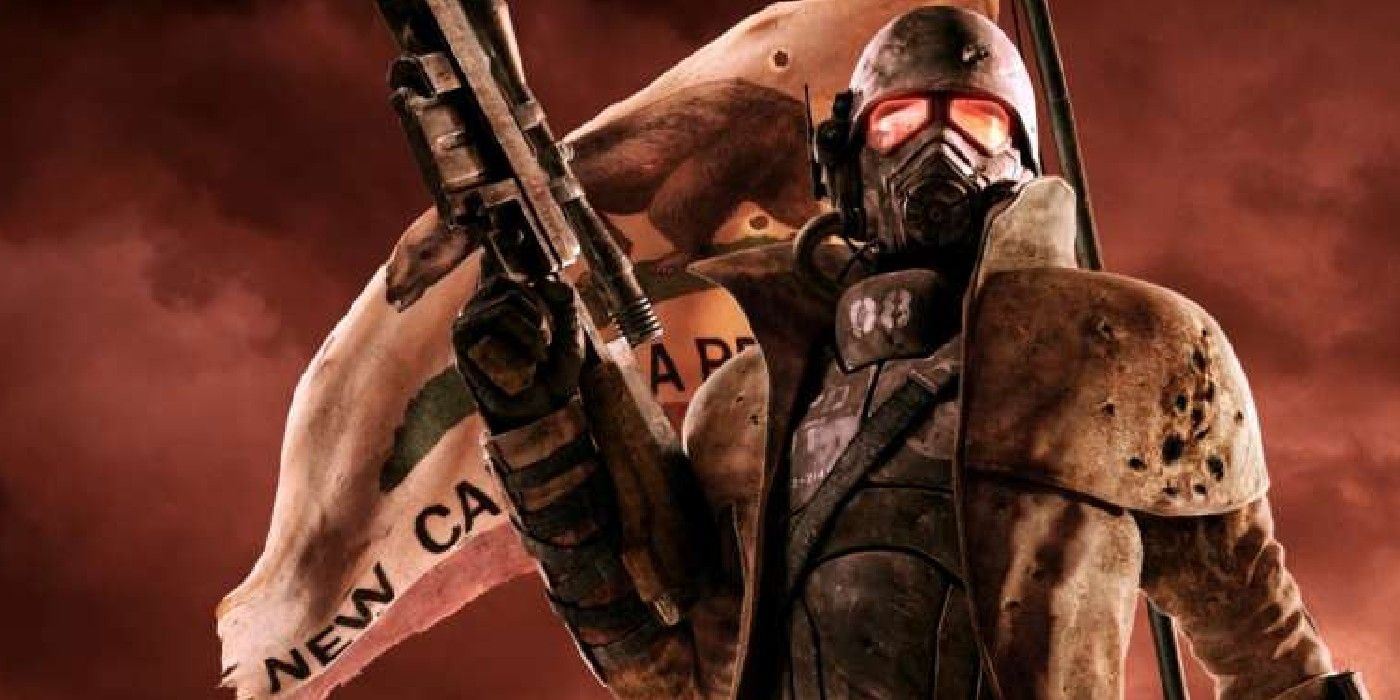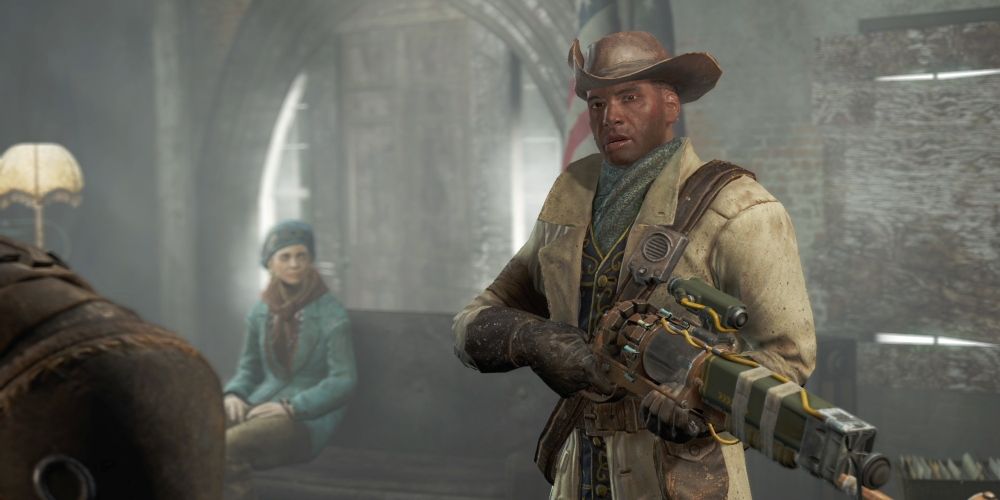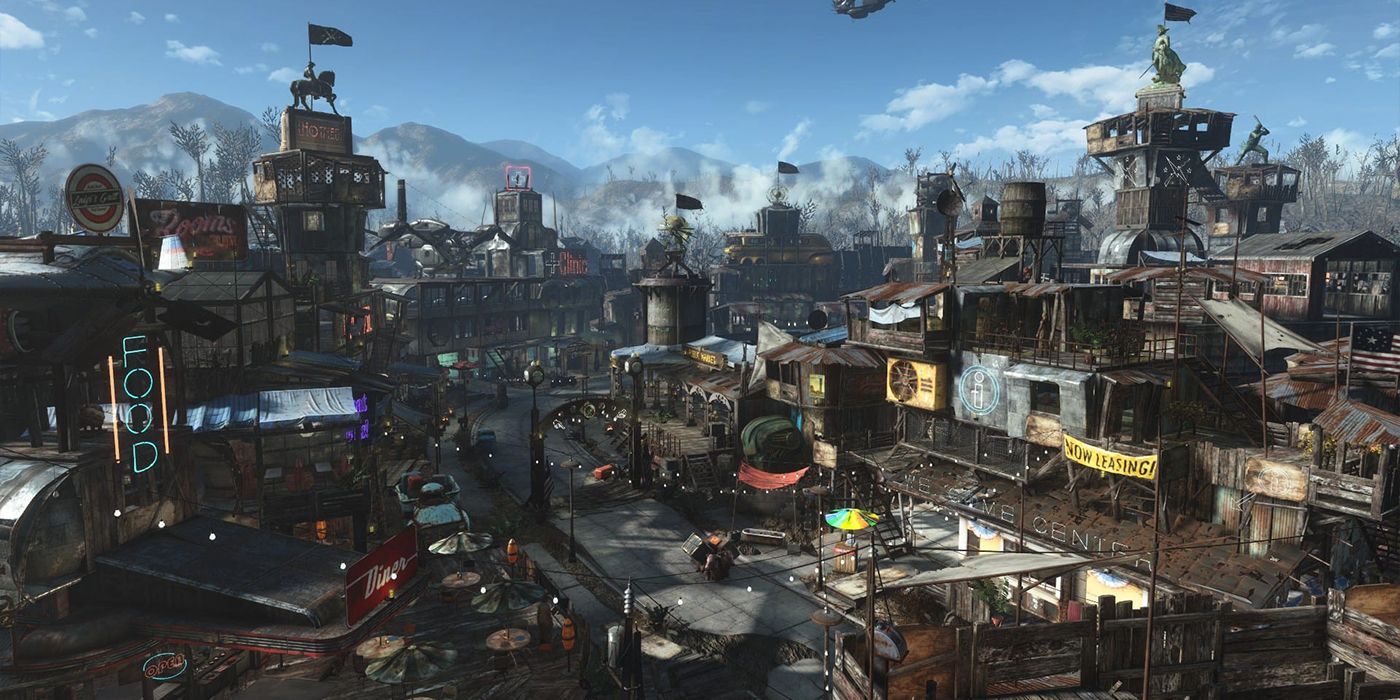At the 2022 Xbox & Bethesda Showcase, Todd Howard confirmed that Fallout 5 is definitely in the works and will be Bethesda's next main project after the release of The Elder Scrolls VI. But once the excitement dies down, Fallout fans will certainly be pondering the question: what route will the new Fallout game take?
Will it continue the trend of Bethesda's design philosophy that began with Fallout 4, which emphasizes player engagement, leveling up, crafting and upgrading gear? Or will it perhaps look further back in the franchise's history, when role-playing, world-building and storytelling took a more central role? Fallout 5, and the franchise as a whole, would certainly benefit more from the latter.
Fallout 5 Should Allow for More Player Freedom
One of the standout features of Fallout and Fallout 2 (as well as Fallout: New Vegas, which purposely sought to emulate the style of those games) is their hands-off approach to player freedom. These games give players significantly more choice in how they want to approach the game or role play as a certain character. There are more quests with branching paths than in Bethesda's other titles, allowing for more options to tackle quests. One of the most famous examples is the quest "Beyond the Beef" from Fallout: New Vegas, which has three endings and considerably more paths to reach those endings, the result being that the player can have a different experience on each playthrough.
Another way that older Fallout games allowed freedom is by leaving out essential characters. In the first two games, as well as New Vegas, there are no essential NPCs whatsoever (except Yes Man in New Vegas), and the experience is more immersive as a result. Players are free to break any quest lines they choose, showing that the developers entrust players to take responsibility for their own actions. While Fallout 3 features this to an extent, Fallout 4 doubles down on essential NPCs to the point that almost every NPC remotely tied to a quest is invincible. The result is the stifling of role-playing opportunities and interesting pathways through quests for the sake of preserving the game's content.
The flip side of giving players freedom, however, is having to account for as many of the potential decisions players could make as possible. Though not an easy task, Fallout: New Vegas succeeds at this in many ways. One approach is having quests react to the player's actions in ways that may not seem obviously connected at first. For example, the player could unlock secret dialogue options with characters because they learned a crucial piece of information from another character earlier in the game. Another way that New Vegas does this is with its skill check system, where proficiency with certain skills unlocks new ways to resolve quests. These kinds of obscure yet logical connections lend more value to the player's choices.
Fallout 5 Should Have More Interesting Quests
There is a noticeable difference between the design of quests in old and new Fallout titles. Quests in the old games are to be experienced primarily for the storylines and role-playing opportunities they provide, and as a result, they feature varying gameplay objectives. While the rewards are usually nice, they aren't the sole reason to play these quests. For example, in Fallout: New Vegas, there are many side quests, and while some are combat-oriented, others primarily involve talking to NPCs, repairing and fixing things or doing detective work to uncover mysteries. These quests feature well-written characters and storylines that keep players engaged.
In contrast, Fallout 4's side quests are often reminiscent of looter shooters in that players must clear out a location or fight their way through a linear dungeon and then collect a reward. Quests that feature interesting premises usually end up resolving their storylines by sending the player to clear a location of enemies. The main quest suffers heavily from this, and the bulk of the story is a series of combat missions, with little room for diplomacy or resolving conflicts through means other than violence. Fallout 4 has a noticeable lack of unique quest lines and instead offloads much of its content onto radiant quests, infinitely looping semi-randomized quests that consist of killing targets or fetching items and returning for a reward. These radiant quests feel lifeless and antithetical to an immersive experience.
Having multiple ways to complete quest lines enhances the quality and depth of quests, and knowing that multiple alternatives are available gives more weight to the player's decisions. For example, Fallout 4's main quest features four factions to choose from, but each choice sets the player down a rigid and inflexible path that doesn't differ between playthroughs. Fallout 3's main quest is similarly set in stone, with the only real decision-making elements being an afterthought at best. The alternative options feel illogical and disconnected from the player's experience playing the story. While Fallout 4 has four endings, Fallout: New Vegas features a dynamic ending that changes with each decision the player makes, and it's unlikely that the same ending would play out twice.
Fallout 5 Should Scale Back Settlement Building
One of the biggest additions in Fallout 4, which made a huge return in Fallout 76, is settlement building. Throughout the Commonwealth are multiple run-down settlements that players can develop by collecting crafting materials to build with. Over time, more settlers will move in, and the settlements start to become living communities that must be regularly maintained by keeping an eye on their resource levels. While not a bad idea on paper, Fallout 4 certainly overdid it -- with a total of 29 settlement locations in the base game. But when it comes to established towns and communities with characters, quests and backstory, Fallout 4's base game only really has Diamond City, Goodneighbor, the Prydwen and the Institute.
More interesting locations could have replaced a number of the settlements, which are devoid of the kind of immersive, world-building content that made previous games so great. Not only do the settlements take up physical space that could have been used for pre-established communities, but as a whole, they robbed development time from side quests. 2011's The Elder Scrolls V: Skyrim features significantly more side quests than 2015's Fallout 4. Fallout 76 made crafting and building a core part of its gameplay and notoriously launched with characters and communities absent from the game entirely, a move that was universally criticized, leading to the introduction of NPCs with the Wastelanders DLC. While settlement building could have a place in Fallout's future, Fallout 5 should learn from its past and prioritize characters, quests and locations with backstory.




